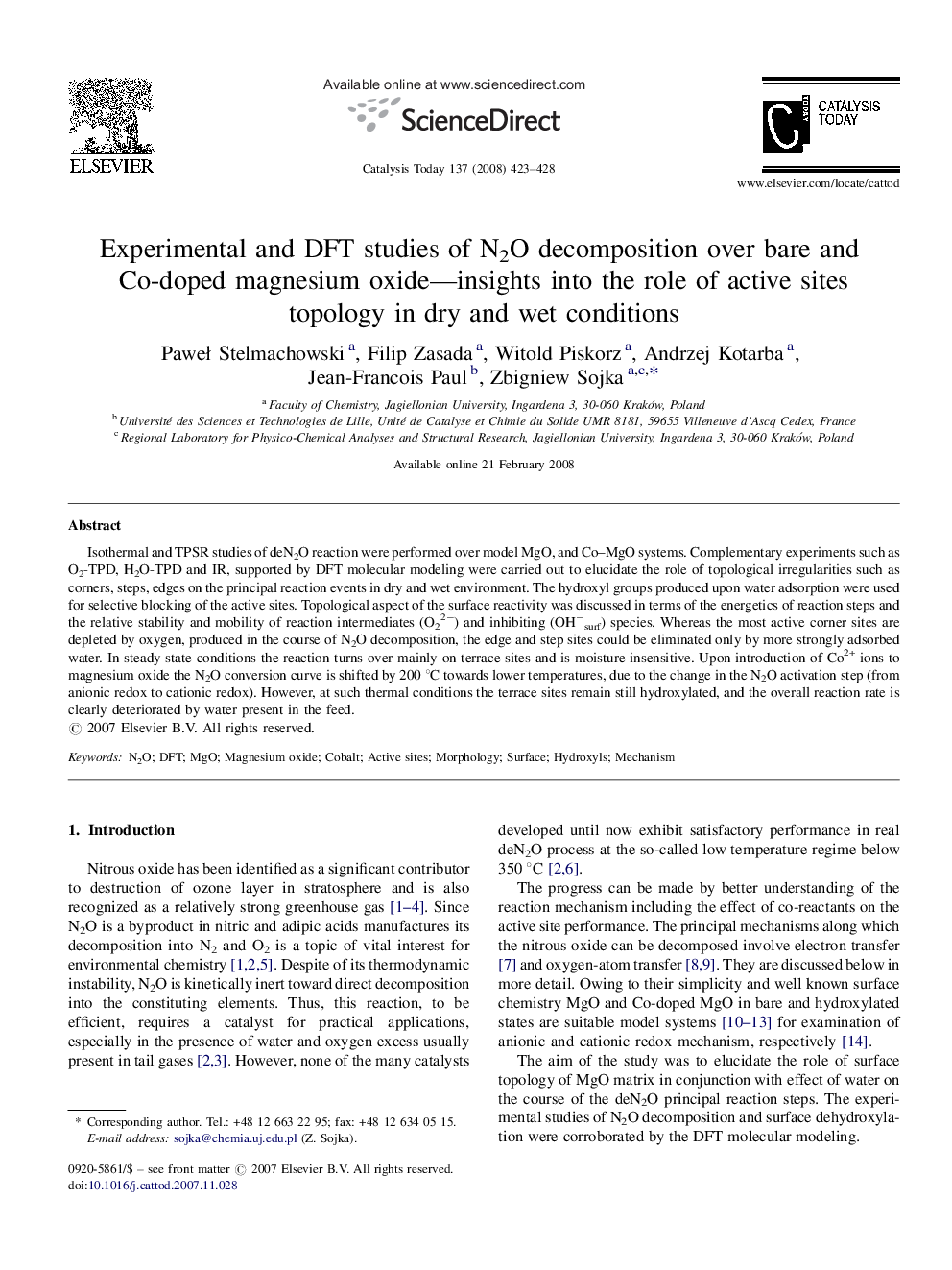| Article ID | Journal | Published Year | Pages | File Type |
|---|---|---|---|---|
| 57549 | Catalysis Today | 2008 | 6 Pages |
Isothermal and TPSR studies of deN2O reaction were performed over model MgO, and Co–MgO systems. Complementary experiments such as O2-TPD, H2O-TPD and IR, supported by DFT molecular modeling were carried out to elucidate the role of topological irregularities such as corners, steps, edges on the principal reaction events in dry and wet environment. The hydroxyl groups produced upon water adsorption were used for selective blocking of the active sites. Topological aspect of the surface reactivity was discussed in terms of the energetics of reaction steps and the relative stability and mobility of reaction intermediates (O22−) and inhibiting (OH−surf) species. Whereas the most active corner sites are depleted by oxygen, produced in the course of N2O decomposition, the edge and step sites could be eliminated only by more strongly adsorbed water. In steady state conditions the reaction turns over mainly on terrace sites and is moisture insensitive. Upon introduction of Co2+ ions to magnesium oxide the N2O conversion curve is shifted by 200 °C towards lower temperatures, due to the change in the N2O activation step (from anionic redox to cationic redox). However, at such thermal conditions the terrace sites remain still hydroxylated, and the overall reaction rate is clearly deteriorated by water present in the feed.
